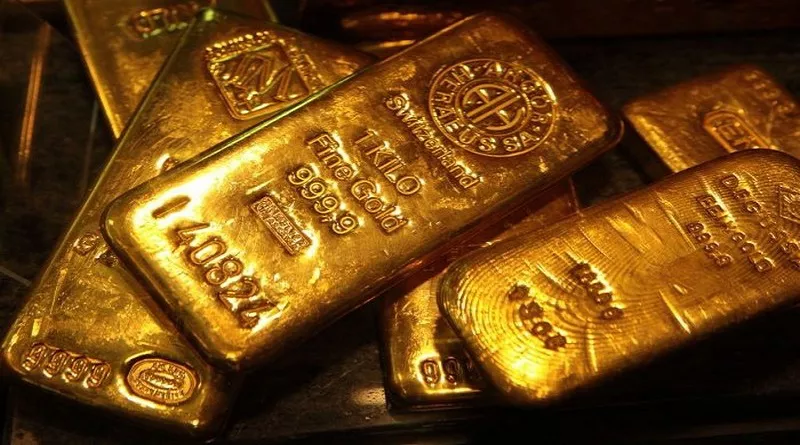The fervent rally in gold prices took a breather on Monday, reversing its upward trajectory as safe-haven demand waned slightly. The focus remains fixed on the potential spillover effects from the ongoing Israel-Hamas conflict, which has kept investors vigilant and the market on edge.
After a significant surge of more than 5% in the preceding week triggered by the Israel-Hamas conflict, the yellow metal experienced a bout of profit-taking, leading to a 0.7% drop in spot gold, now valued at $1,920.07 per ounce. The gold futures due to expire in December also took a hit, declining by 0.4% to $1,933.15 an ounce as of 00:15 ET (04:15 GMT).
A firm stance on interest rates by the Federal Reserve, reinforced by stronger-than-expected U.S. inflation data last week, has dampened gold’s appeal. The anticipation of prolonged higher interest rates has curbed any significant upward movement in the price of gold, despite escalating global uncertainties, and highlighted the dollar as the preferred safe-haven asset, nearly reaching a 10-month peak last week.
In contrast, copper prices rebounded notably on Monday, recovering from a recent slump close to a five-month low. Copper futures witnessed a 0.5% increase, reaching $3.5907 a pound. Investors are now closely monitoring the release of crucial economic indicators from China, especially the third-quarter gross domestic product, expected to reveal a further weakening in economic growth and potentially affecting Chinese copper demand.
The prevailing concerns over China’s economic conditions have notably affected copper prices in the past year. Despite this, the People’s Bank of China is not anticipated to make any changes to its key loan prime rates this week, signaling a relative stability in the country’s monetary policy.
As the market continues to navigate the volatile landscape, the developments in the Middle East and the evolving dynamics of the global economy will likely shape the trajectory of both gold and copper prices in the days to come.

